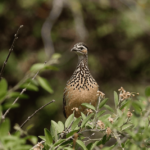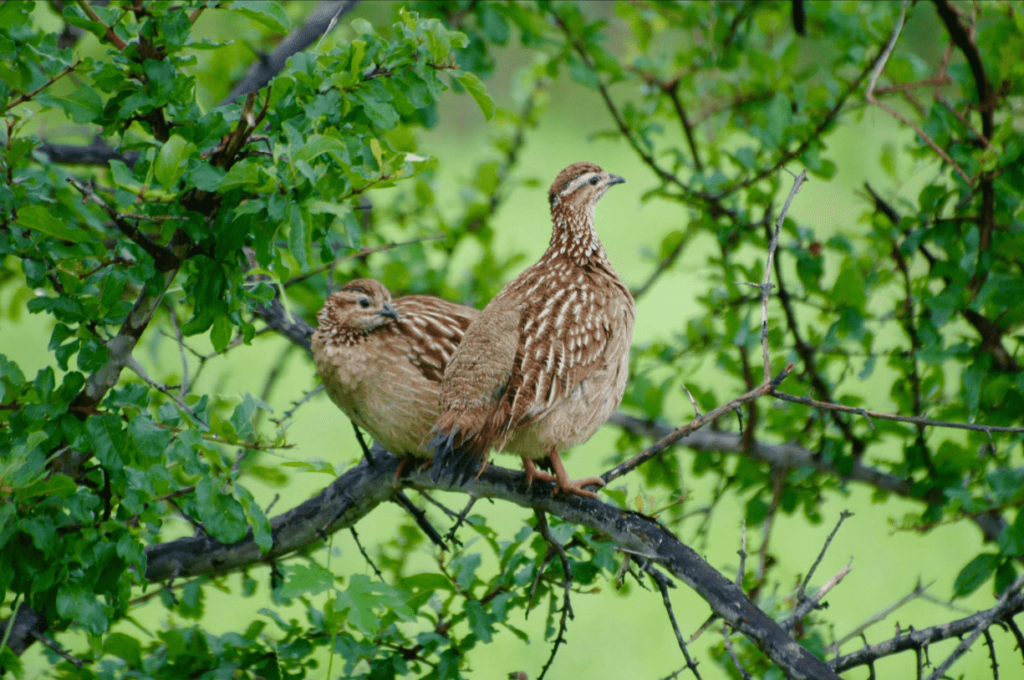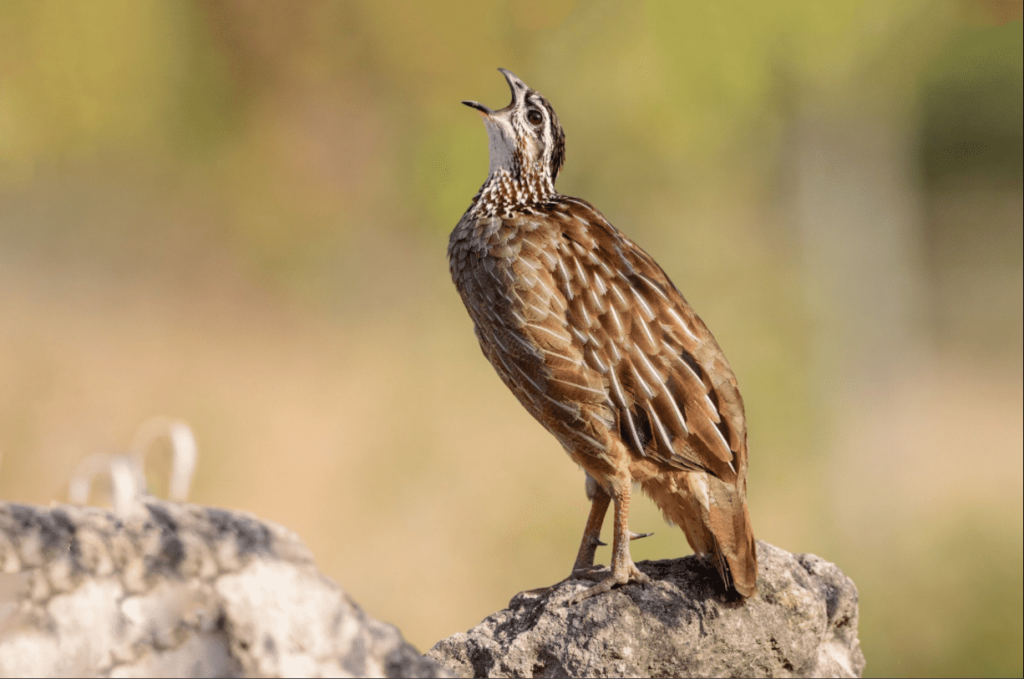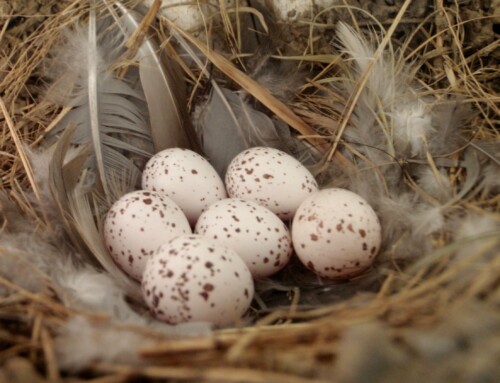LINKED PAPER
Call variation of Crested Francolin (Dendroperdix sephaena) across Africa defies the effects of spatial gradients. van Niekerk, J.H., Megía-Palma, R. & Forcina, G. 2021 IBIS. DOI: DOI:10.1111/ibi.12945 VIEW
 After more than 15 years of playback experiments on galliforms species across Africa, I concluded that none responded more actively than the Crested Francolin Dendroperdix sephaena. This taxon¬—probably the most pugnacious among the gamebirds of the African bush—has, unlike spurfowl (Pternistis spp.), fast-growing spurs, becoming very sharp in the first five months of life, which instead takes the latter more than one year. Not surprisingly, Crested Francolin males combat with each other during the pre-breeding season when they join male dominated coalitions.
After more than 15 years of playback experiments on galliforms species across Africa, I concluded that none responded more actively than the Crested Francolin Dendroperdix sephaena. This taxon¬—probably the most pugnacious among the gamebirds of the African bush—has, unlike spurfowl (Pternistis spp.), fast-growing spurs, becoming very sharp in the first five months of life, which instead takes the latter more than one year. Not surprisingly, Crested Francolin males combat with each other during the pre-breeding season when they join male dominated coalitions.
During playback sessions males often approached and jumped on me, showing no fear for humans while raging against the sound equipment. This made me wonder why they relentlessly attacked the sound source rather than another male bird, thus pointing to the importance of calls to recognise their conspecifics in the dense bush. Clearly, the male aimed to silence the call to prevent his female from eloping and engaging with the interloper.
Figure 1 shows an agitated male attacking a mobile decoy during a playback session. The instrument was severely damaged by the male that jumped on the “intruder” and struck it with his spurs. Interestingly, the Crested Francolin male produces a moaning-and-granting call during combat like the Grey Francolin Francolinus pondicerianus, one of its close relatives in the phylogenetic tree (Bloomer and Crowe 1998; Mandiwana-Neudani et al. 2019). This very pugnacious Asian species, referred to as “Teetar”, is actively bred and trained for the purpose of francolin fights in several Middle Eastern countries.
 Figure 1 Agitated Crested Francolin male attacking a decoy after having been enticed by playback. © Johann van Niekerk
Figure 1 Agitated Crested Francolin male attacking a decoy after having been enticed by playback. © Johann van Niekerk
Until recently, D. sephaena was considered to be the only francolin that roost in trees (Figure 2) and, for this reason, its taxonomic position was often thought to be intermediate between francolins and spurfowl (Mandiwana-Neudani et al. 2019). We concluded that the active response of this species to playbacks and its wide distribution across Africa makes it a particularly good model to demonstrate the nature of call variation across spatial gradients.
 Figure 2 Crested Francolin distinguish themselves from all other francolins in Africa by roosting and sitting in trees during the day. Credit: David Fraser; Macaulay Library ML 30433041
Figure 2 Crested Francolin distinguish themselves from all other francolins in Africa by roosting and sitting in trees during the day. Credit: David Fraser; Macaulay Library ML 30433041
Five largely allopatric subspecies occur: D. s. sephaena (Bospatrys) in southern Africa, D. s. rovuma (Kirk’s Francolin) along the eastern coastal bushes of Kenya, Tanzania and Mozambique, D. s. zambesiae (Zambesiese Bospatrys) along the Chobe River and southern Zambia, D. s. grantii (Grant’s Francolin) in Kenya and Ethiopia and D. s. spilogaster in Somalia (Gill and Donsker 2018). There is no common name for the latter as it was regarded as a subspecies of D. s. rovuma, which was considered a separate species, namely Kirk’s Francolin (Mackworth-Praed and Grant 1952). Currently there is little evidence for hybrid zones except in Ethiopia where D. s. grantii and D. s. spilogaster seem to be parapatric.
Intraspecific geographic variation of non-passerine vocalisations remains under-studied, especially in African species (Weir & Wheatcroft 2010). We explored spatial patterns in call variation of the Crested Francolin across its wide sub-Saharan distribution by extracting and comparing 152 pair duets from 44 recordings encompassing four D. sephaena subspecies and, in the field, played back each subspecies’ vocalisations to 15 D. s. sephaena and three D. s. zambesiae males to document their behaviour.
 Figure 3 Males point their beaks skyward to produce calls with remarkable thrust. Credit: Stefan Hirsch; Macaulay Library ML 211670021
Figure 3 Males point their beaks skyward to produce calls with remarkable thrust. Credit: Stefan Hirsch; Macaulay Library ML 211670021
We recorded strong responses to con-subspecific calls and weak responses to hetero-subspecific calls, especially towards D. s. grantii and D. s. rovuma. This indicates that intraspecific vocal variability in D. sephaena is not clinal but spatially discrete, and strictly reflects subspecies affiliation (albeit with more similar vocal features among geographically neighbouring subspecies). Vocal variation in D. sephaena may have evolved under palaeoclimatic events that fragmented its former range and promoted allopatric diversification before a re-expansion into partial sympatry.
Quo vadis? This study provided a window opportunity on how vocalisations evolve. Isolated populations have a strong propensity to diverge from their ancestral stocks through speciation. During her time as bird curator from 1947–1971 at the Natural History Museum at Tring (UK), Pat Hall described the phylogeny of the francolins and spurfowl (Hall 1963), pointing to the establishments of habitat barriers as the main drivers of their radiations. Since her seminal work, other scientists have devoted their attention to the systematics and taxonomy of African francolins and spurfowl (Milstein and Wolff 1998). However, a comprehensive approach based on genomics and morphology other than vocalisations is required to infer adaptive patterns and possibly elevate subspecies to species level as suggested by Mandiwana-Neudani et al. (2019).
Scrutinising the calls of non-passerines across a large geographical area is a good feedforward tool to look for boundaries between subspecies, or to substantiate existing studies on speciation. Guineafowl, spurfowl and francolin in Africa are still awaiting an extensive work in this regard.
References
Bloomer P. & Crowe T.M. 1998. Francolin Phylogenetics: Molecular, Morphobehavioral, and Combined Evidence. Molecular Phylogenetics and Evolution 9: 236-254. VIEW
Gill, F. & Donsker, D. (eds). 2018. IOC World Bird List (v8.2). VIEW
Hall, B.P. 1963. The francolins, a study in speciation. Bulletin of the British Museum (Natural History). Zoology. 10: 107-204.
Macworth-Praed G.W. & Grant H.B. 1952. Birds of Eastern and North Eastern Africa. Longmans. London.
Mandiwana Neudani, T.G., Bowie, R.C.K., Hausberger, M., Henry, L.M. & Crowe, T.M. 2014. Taxonomic and phylogenetic utility of variation in advertising calls of francolins and spurfowls (Galliformes: Phasianidae). African Zoology 49: 54–82. VIEW
Milstein P le S., Wolff S. W. 1998. The oversimplification of our “francolins”. South African Journal Of Wildlife Research Suppl. 1: 58-65.
Weir J.T. & Wheatcroft, D. 2010. A latitudinal gradient in rates of evolution of avian syllable diversity and song length. Proceedings of the Royal Society B 278: 1713–1720. VIEW
Image credit
Top right: Credit: Holger Teichmann, Macualay Library ML226800621




